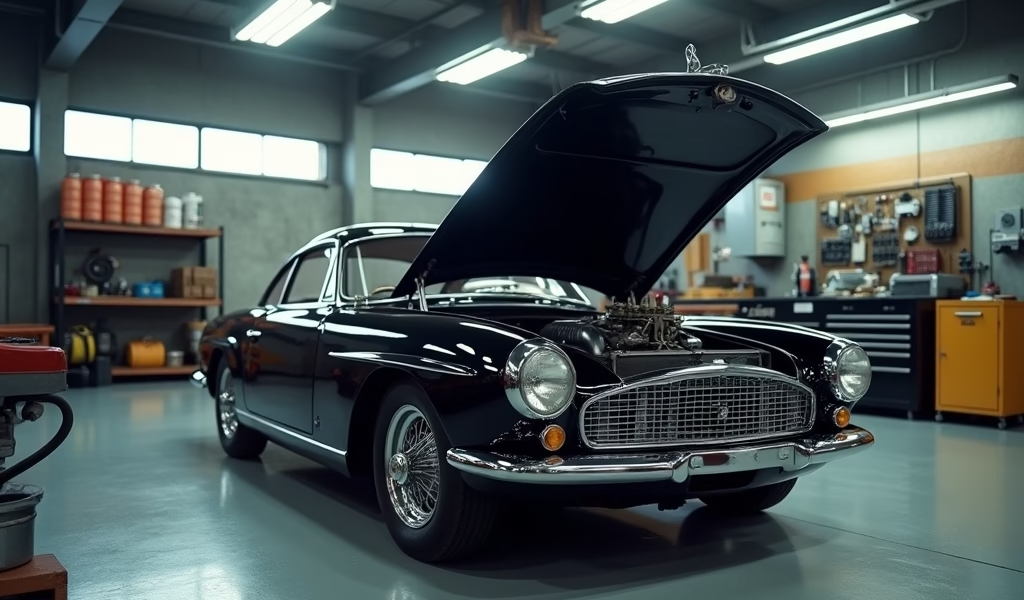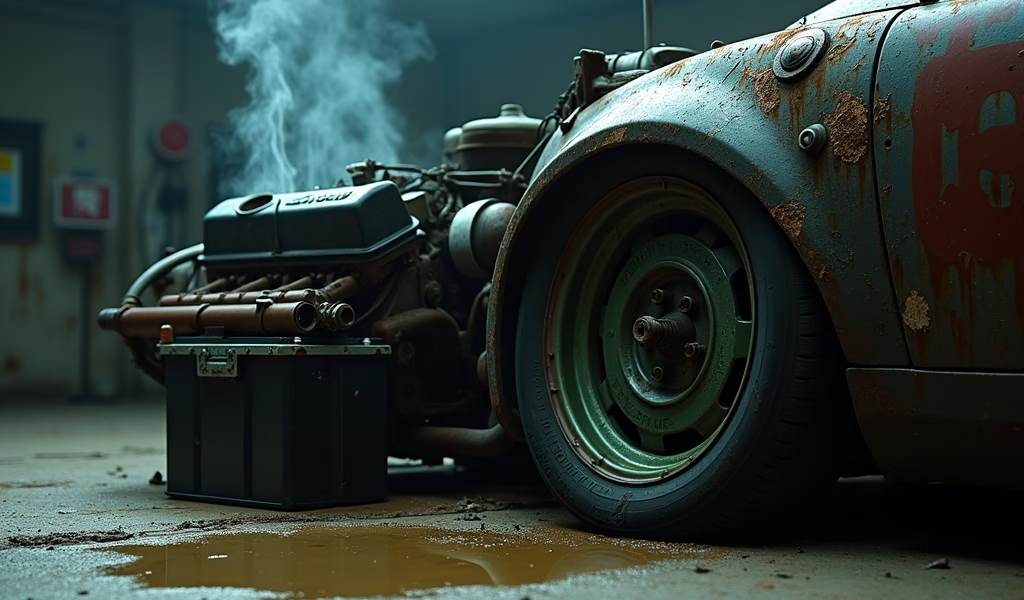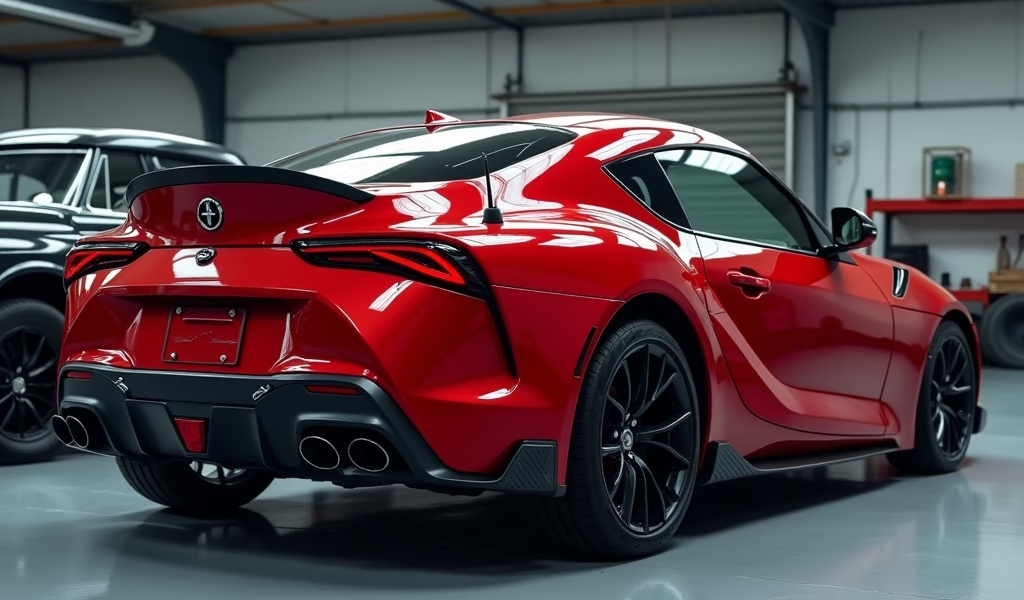Overview
This article explores the specialized maintenance techniques used for vehicles in Hollywood productions, covering engine modifications, paint restoration, interior detailing, suspension engineering for stunts, and special effects integration. The piece emphasizes how these professional techniques can be adapted by everyday car owners to improve their own vehicles’ performance, appearance, and longevity.
Table of Contents
- Behind the Scenes: Hollywood’s Four-Wheeled Stars
- Engine Modifications: Creating the Perfect Soundtrack
- Body and Paint Restoration: The Camera-Ready Shine
- Interior Detailing: Where the Stars Sit
- Suspension and Stunt Readiness: Defying Physics
- Special Effects Integration: Where Tech Meets Tradition
- Conclusion: Star Treatment for Every Vehicle
- Frequently Asked Questions
Behind the Scenes: Hollywood’s Four-Wheeled Stars
When that muscular Dodge Charger roars onto the screen or James Bond’s sleek Aston Martin purrs around a corner, you’re witnessing more than just transportation—you’re seeing the result of meticulous movie car maintenance that rivals the care given to human celebrities.
As a master mechanic who’s worked behind the scenes on several film productions, I’ve seen firsthand how these four-wheeled icons are transformed from ordinary vehicles into silver screen legends. The gleaming chariots that capture our imagination don’t stay camera-ready by accident—they demand specialized attention and technical expertise that goes far beyond your typical oil change.
Movie cars often work harder than any vehicle you’ll see on the road. They perform death-defying stunts, withstand punishing driving sequences, and must look immaculate under the unforgiving eye of 4K cameras. What appears as a simple 30-second chase scene might require weeks of preparation and multiple identical vehicles—each maintained for specific purposes.
While your daily driver might never jump between skyscrapers like in “Fast & Furious,” the core maintenance principles remain remarkably similar. Let’s dive under the hood of Hollywood and explore the five essential fixes that keep these automotive legends rolling—and how you can apply these same techniques to your own vehicle.
Engine Modifications: Creating the Perfect Soundtrack
That spine-tingling growl of Lightning McQueen’s engine or the thunderous roar of Dom Toretto’s Charger isn’t left to chance. In the world of movie cars, sound is everything. As automotive sound designer Martin Miller explains, “The audience might forgive blurry visuals, but they’ll never forgive disappointing engine sounds.”
Film mechanics often modify exhaust systems extensively, swapping out factory components for custom-fabricated pipes that produce exactly the right tone and volume. Camshafts are replaced to create distinctive idle characteristics, while intake systems are redesigned to amplify induction noise—that satisfying “whoosh” when the accelerator hits the floor.
For productions with substantial budgets like the Bond films, mechanics maintain multiple versions of the same car with different engine setups. The “hero car” used for close-ups and driving scenes by the main actor might pack the authentic powerplant, while stunt doubles could house completely different engines optimized for specific sequences.
What many viewers don’t realize is that sometimes the most iconic engine sounds are carefully engineered compositions. According to Hot Cars, the distinctive purr of the DeLorean in “Back to the Future” was actually created using Porsche engine recordings, as the vehicle’s original power plant lacked cinematic appeal.
While you shouldn’t compromise your vehicle’s reliability for sound alone, there are legitimate ways to enhance your car’s voice:
- High-flow air intakes can improve both performance and sound character
- Cat-back exhaust systems offer legal sound enhancement without emissions issues
- Resonator modifications can fine-tune exhaust tone without excessive volume
- Regular valve adjustments ensure your engine maintains its proper voice
Remember: The best-sounding engines are also well-maintained engines. That distinctive mechanical symphony comes from precisely adjusted components working in harmony.

Body and Paint Restoration: The Camera-Ready Shine
In Hollywood, a vehicle’s paint doesn’t just need to look good—it needs to look perfect. Under high-definition cameras and precisely calculated lighting, even microscopic imperfections become glaring flaws. This unforgiving scrutiny has pushed movie car painters and detailers to develop techniques that create truly flawless finishes.
The iconic red Ferrari from “Ferris Bueller’s Day Off” wasn’t actually a real Ferrari—it was a meticulously crafted replica with paint so perfect it fooled even automotive experts. Each panel required multiple wet-sanding sessions with progressively finer abrasives, followed by hand-polishing techniques that would make even the most dedicated detailer’s arms ache.
“Movie cars live in a world where light is a character,” explains Vanessa Rodriguez, lead painter at Classic Film Fleet Services. “We’re not just making cars look good—we’re creating surfaces that interact with light in very specific ways. Sometimes we want reflections, sometimes we don’t.”
For action sequences, multiple identical-looking vehicles are prepared with varying levels of finish. The “beauty car” receives obsessive paint correction and ceramic coating protection, while stunt doubles might wear easily repairable finishes designed to look identical on camera but requiring less time to restore between takes.
You can bring a touch of this Hollywood magic to your own vehicle:
- Clay bar treatment removes embedded contaminants invisible to the naked eye
- Two-stage polishing addresses both significant defects and fine swirl marks
- Ceramic coating provides longer-lasting protection than traditional wax
- Regular maintenance washing prevents contaminant buildup before it bonds to paint
The secret isn’t just in the products—it’s in the patience. Hollywood detail teams might spend 40+ hours on a single vehicle’s paint correction. While that’s unrealistic for most of us, adopting their methodical approach will yield impressive results even in shorter timeframes.
Interior Detailing: Where the Stars Sit
When James Bond slides behind the wheel or Dominic Toretto grips a steering wheel with determination, the interior surrounding them must be as meticulously maintained as their wardrobes. Movie car interiors serve as intimate settings for crucial dialogue and character development—every surface viewers see must tell the right story.
For period films, interior specialists become historical researchers, sourcing authentic materials and recreating factory finishes that might have disappeared decades ago. The gangster cars in “The Godfather” featured painstakingly restored leather seats with natural patina that suggested wealth without ostentation—perfectly matching the character of their fictional owners.
Modern action films present different challenges. “We design interiors to withstand repeated stunts while still looking perfect for close-ups,” explains Thomas Chen, interior specialist for several major studios. “Sometimes we’ll reinforce seat bolsters with hidden materials or modify dashboards to prevent unwanted reflections on actors’ faces.”
What’s particularly fascinating is how film production crews maintain continuity. Water spots, dust patterns, and even fingerprints must remain identical between shots filmed days apart. Detailed photographs document every interior surface between takes, allowing teams to restore exact conditions when filming resumes.
Bring professional interior detailing techniques home with these approaches:
- Use compressed air before vacuuming to dislodge debris from tight spaces
- Apply leather conditioners that nourish rather than just adding surface shine
- Clean plastic and vinyl surfaces with dedicated products that won’t leave residue
- Protect dash surfaces with UV inhibitors to prevent cracking and fading
The most important lesson from film set detailers? Consistency beats intensity. Regular light maintenance prevents the need for aggressive cleaning that can damage materials over time.
Suspension and Stunt Readiness: Defying Physics
When movie cars leap through the air, drift around impossibly tight corners, or survive drops that would cripple ordinary vehicles, you’re witnessing the results of specialized suspension engineering and structural reinforcement that makes the impossible look effortless.
The team behind the “Fast & Furious” franchise maintains dedicated “jump cars” with completely redesigned suspension geometry, reinforced attachment points, and custom landing systems. “What looks like a single car on screen might actually be five different vehicles,” reveals Michael Ortiz, stunt vehicle coordinator. “The one that jumps never needs to drive again—it just needs to survive that one perfect take.”
For precision driving sequences like the legendary chase in “Bullitt,” mechanics modify suspension components to create predictable handling characteristics that allow stunt drivers to execute choreographed maneuvers with remarkable consistency. This might mean sacrificing comfort and even longevity for absolute control in specific conditions.
According to Motor Trend’s investigation into stunt vehicles, some productions use hydraulic systems that can instantly alter a car’s ride height or stance mid-sequence, creating visual drama that would be impossible with conventional suspensions.
While your daily commute hopefully doesn’t include jumping drawbridges, you can still benefit from these principles:
- Maintain proper wheel alignment to ensure predictable handling
- Replace worn shock absorbers to prevent excessive body movement
- Inspect suspension bushings regularly for signs of deterioration
- Consider quality performance-oriented replacement parts when originals wear out
Remember that even in Hollywood, physics can’t be completely defied—just carefully managed. The same applies to your vehicle: proper suspension maintenance won’t make it perform supernatural feats, but it will maximize its capabilities within real-world limitations.

Special Effects Integration: Where Tech Meets Tradition
Modern movie cars exist at the fascinating intersection of mechanical craftsmanship and cutting-edge digital technology. The vehicles that captivate audiences today often blend practical effects with computer-generated enhancements, requiring maintenance teams with increasingly diverse skill sets.
The Aston Martin DB5 in recent Bond films illustrates this perfectly. While it appears fully functional on screen, it contains hidden compartments for camera equipment, remote driving systems that allow stunt drivers to control the vehicle from unconventional positions, and mounting points for special effects equipment that disappears in post-production.
“Today’s movie mechanics are part traditional car experts and part technology integrators,” explains Robert Zhang, technical coordinator for several Marvel films. “We’re constantly balancing what’s achieved mechanically versus what’s added digitally, always aiming for the most convincing final result.”
For the increasingly sophisticated self-driving sequences seen in sci-fi films, specialized electronic control systems allow vehicles to follow precise pre-programmed paths. These systems require extensive calibration and maintenance between takes, with dedicated technicians monitoring multiple parameters to ensure consistency and safety.
Even as a home mechanic, you can embrace this blend of traditional and modern approaches:
- Keep your vehicle’s engine control module software updated
- Learn to use OBD-II diagnostic tools to identify electronic issues early
- Maintain both mechanical systems and the sensors that monitor them
- Don’t overlook traditional maintenance even in highly computerized vehicles
The most successful movie car technicians understand that new technology doesn’t replace fundamental mechanical principles—it builds upon them. Your maintenance approach should similarly embrace both worlds.
Conclusion: Star Treatment for Every Vehicle
Hollywood’s iconic movie cars may seem to inhabit a different universe than our everyday vehicles, but the principles that keep them performing flawlessly apply universally. Whether maintaining the Batmobile or your family sedan, attention to detail and preventative care make all the difference.
The secret behind those gleaming movie cars isn’t unlimited budgets or exotic materials—it’s the disciplined application of fundamental maintenance principles taken to their highest expression. Film mechanics understand that every component contributes to the vehicle’s overall performance and appearance.
You might not have a team of specialists maintaining your daily driver, but you can adopt their mindset. Treat routine maintenance not as a burden but as an opportunity to preserve and enhance your vehicle’s best qualities. Listen closely to unusual sounds, address small issues before they become major problems, and take pride in maintaining your car’s appearance.
The next time you watch an automotive icon thunder across the screen, remember the dedicated professionals who made that moment possible—and consider how their techniques might improve your own relationship with your vehicle. After all, every car deserves a bit of star treatment.
Frequently Asked Questions
How many cars are typically used for a single movie car character?
Most major productions use between 5-12 identical-looking vehicles for a single movie car character. Different vehicles serve specific purposes such as beauty shots, driving sequences, stunts, or partial vehicles for interior filming.
Are the engine sounds in movies real or added later?
It’s typically a combination of both real recordings and post-production enhancement. Sound engineers often record high-performance versions of the actual vehicles, then enhance specific frequencies to create the most dramatic effect.
How do movie mechanics repair cars between stunts?
Production teams maintain fully equipped mobile workshops with spare parts for rapid repairs. For major stunts, they often rotate through multiple identical vehicles rather than attempting extensive repairs during tight shooting schedules.
Why do movie cars often look cleaner than they should in the story context?
This is usually an intentional continuity decision to maintain visual consistency between scenes. Applied dirt and grime are carefully controlled “makeup” rather than actual road debris, allowing precise replication between shots.
How can I make my car look like a famous movie vehicle?
Focus on accurate color matching, proper wheel selection, and period-correct details rather than just major visual elements. The most convincing replicas nail the small details that casual observers might miss but enthusiasts will appreciate.


Pingback: Car Story: 7 Proven Maintenance Hacks - knowsyourcar.com
Pingback: Best Movie Cars: Proven DIY Maintenance - knowsyourcar.com